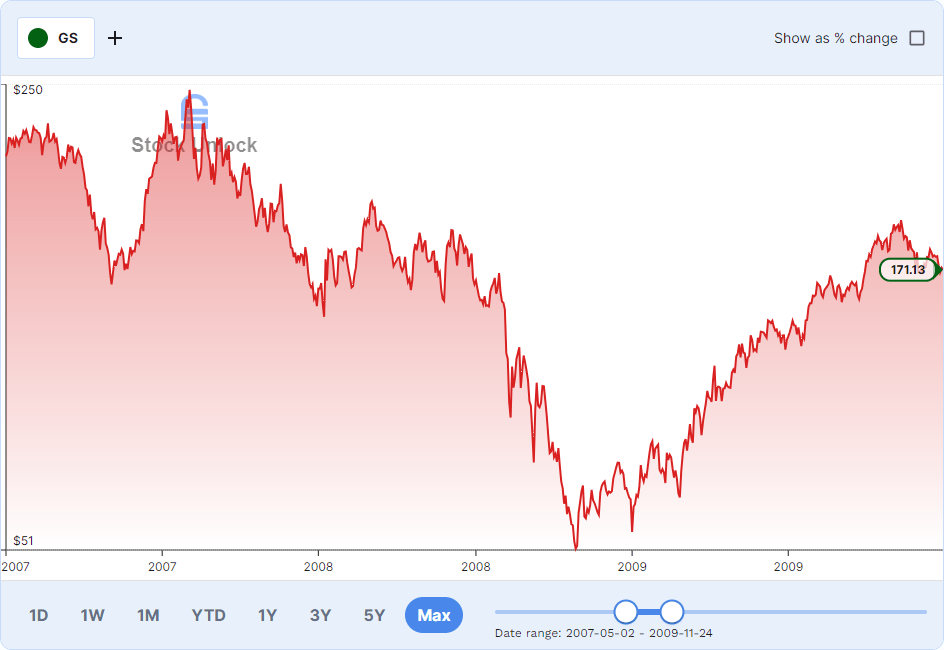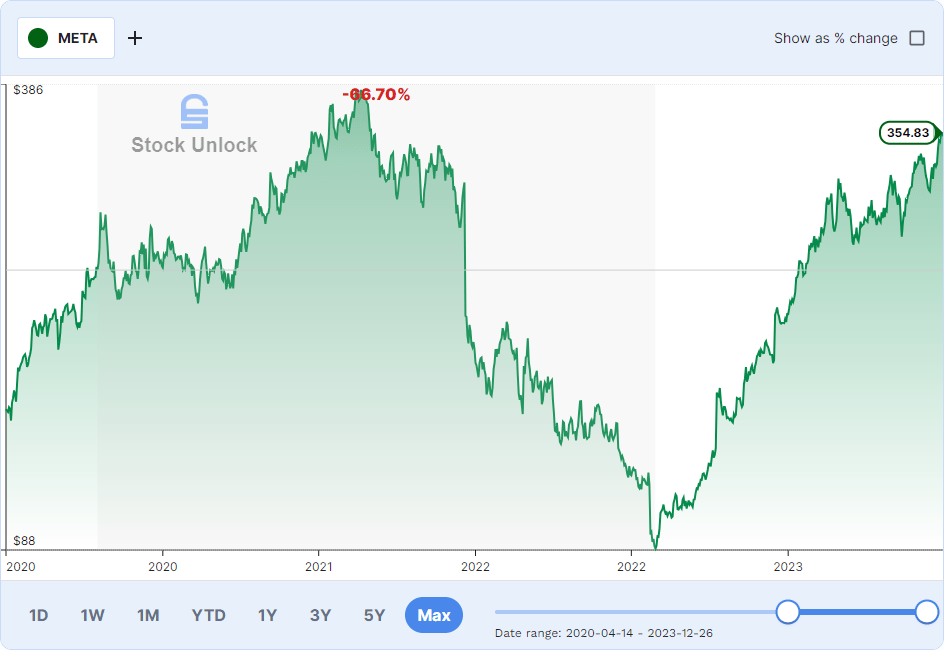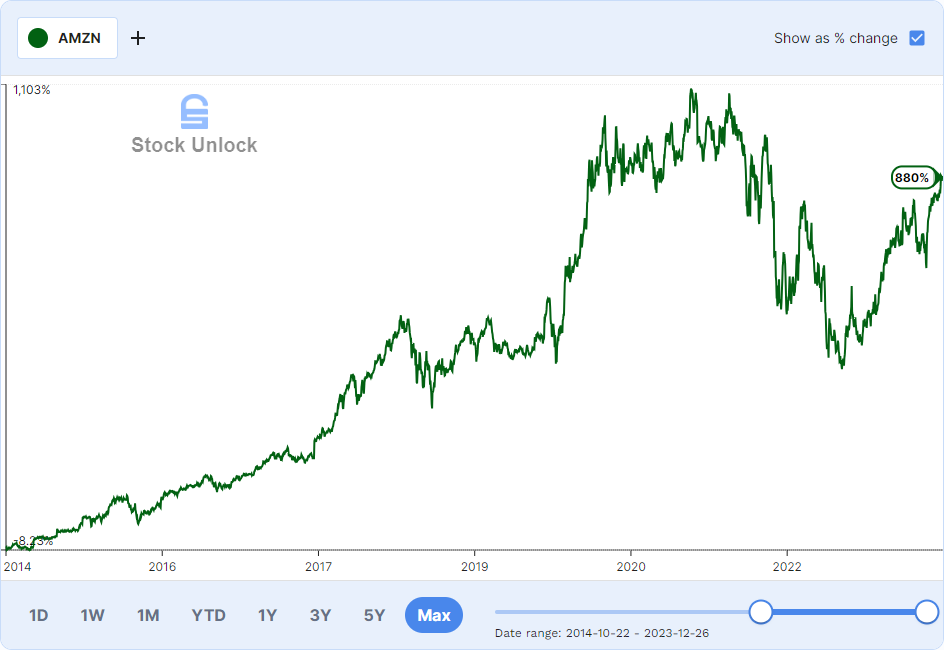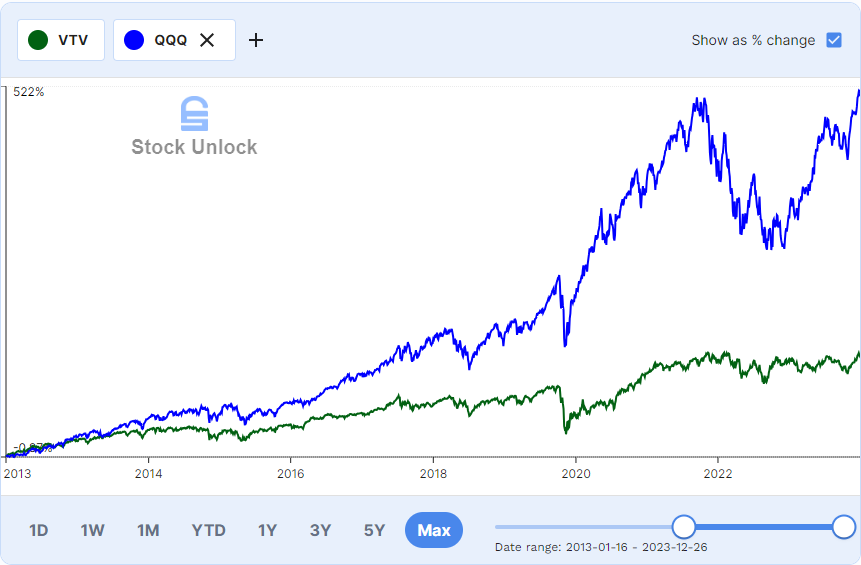There are numerous investment strategies developed throughout the market existence. Value investing and growth investing have unique approaches, principles, and merits, and I remember being at a crossroads, trying to decide which path to follow. In this article, we’ll explore these strategies to help you determine which one might be a better fit for your investment portfolio.
Table of contents:
- Value Investing
- Growth Investing
- Value vs. Growth: A Battle of Strategies
- Real-World Application of Value vs. Growth Investing 2023
- Conclusion
Value Investing
Value investing is an investment strategy pioneered by legendary investors such as Warren Buffett and Benjamin Graham. This approach focuses on identifying undervalued stocks compared to their intrinsic value. Here’s how value investing works:
Key Principles of Value Investing
- Fundamental analysis: Value investors study a company’s financials, focusing on metrics like the price-to-earnings (P/E) ratio, earnings per share (EPS), and dividend yield.
- Intrinsic value: The goal is to find stocks trading below their intrinsic value, which represents their true worth.
- Long-term perspective: Value investors tend to have a long-term outlook, often holding stocks for years or even decades.
- Risk mitigation: They seek to minimize risk through diversification and by buying stocks at a significant discount.
The Value Approach in Action
Consider a scenario where a well-established company’s stock is temporarily undervalued due to a market downturn or negative sentiment. A value investor sees this as an opportunity to buy a fundamentally sound stock at a bargain price, expecting its value to be recognized in the future.
A real-life example from super investors: During the 2008 financial crisis, Warren Buffett’s Berkshire Hathaway invested in undervalued financial institutions like Goldman Sachs, getting a substantial return when the market recovered.

A real-life example from me: In a more recent scenario, during the 2022 big tech sell-off, META was heavily discounted because investors were concerned about Tiktok competition, spending on the metaverse, and digital advertisement slowdown. This served as a great example of a value play because a fundamentally strong business was traded below its fair value.

Growth Investing
Growth investing, on the other hand, is all about identifying companies with the potential for rapid revenue and earnings growth. Here’s how growth investing operates:
Key Principles of Growth Investing
- Earnings growth: Growth investors prioritize companies with a track record of strong earnings growth and the potential for further expansion.
- Market leadership: They look for businesses in emerging or disruptive industries that have the potential to become market leaders.
- High market capitalization: Growth stocks are often associated with companies of all sizes, but many growth investors focus on small and mid-cap stocks.
- Long-term growth: Like value investors, growth investors also tend to have a long-term perspective.
The Growth Approach in Action
Imagine a start-up that operates in a cutting-edge technology field, and its products are in high demand. A growth investor might be willing to pay a premium for the stock, anticipating that the company’s earnings will skyrocket as it captures a larger market share.
A real-life example: Think of Amazon in its early days. Growth investors who believed in its potential for disrupting the retail industry and expanding into various sectors benefited from a stock price appreciation.

A real-life example from me: I want to be transparent with my mistakes and share that I don’t have a great experience implementing this strategy. Here is a stock, Paycom (PAYC), which appeared to be a promising growth stock: profitable, with no debt, 20% EPS growth year-over-year, introducing a new tool for payroll processing that could potentially revolutionize the industry, and a mid-cap stock. However, unforeseen challenges, including weaker-than-expected guidance and internal issues with the company’s product, led to a significant price drop within the short term. In conclusion, I wanted to highlight the extreme volatility that growth stocks can exhibit when sentiment changes.

Value vs. Growth: A Battle of Strategies
Now, let’s compare value investing against growth investing in a head-to-head battle across various disciplines.
Historical Performance
Let’s analyze the performance of Exchange-Traded Funds (ETFs) over the past 10 years. VTV represents value investing, while QQQ represents growth investing.

Let’s delve into the insights provided by the table:
| Value investing | Growth investing | |
| Performance in bull markets | Good performance | Strong market growth |
| Performance in bear markets | Bear market resilience | Vulnerable to downturns |
| Long-term consistency | Stable, less volatile | Long-term growth potential |
| Risk and volatility | Lower risk, lower volatility | Higher risk, more volatility |
In my assessment, value investing appears to have an edge in this table. However, it’s crucial to remember that the significance of each criterion varies among different investors. For me, while considering the different disciplines, performance carries the most weight in my investment decisions. I’m willing to accept some degree of risk and volatility to potentially achieve higher returns.
Value investing vs. Growth investing : 0 – 1
Investment Strategies Complexity
Value and growth investing employ different strategies and metrics when evaluating potential investments. The approach for each strategy is widely different.
Value Investing Strategies
- Price-to-earnings (P/E) and price-to-free cash flow (P/FCF) ratios: These ratios help value investors identify undervalued stocks by comparing the stock price to the earnings generated.
- Dividend yield: A higher dividend yield can be an attractive feature for value investors, as it indicates a steady income stream.
Growth Investing Strategies
- Earnings growth rate: Growth investors focus on the company’s historical and projected earnings growth rate. This can be a challenging aspect, as projecting future earnings requires a lot of due diligence.
- Total addressable market (TAM): Understanding the company’s potential market size is essential for assessing growth prospects.
- Market share: Identifying companies that are rapidly gaining market share is a key criterion for growth investors.
In my view, value investing is relatively easier to implement, as it primarily involves analyzing the quantitative aspects of the business, waiting for the stock to reach a target price, accumulating shares, and patiently waiting for the market to recognize its value.
On the other hand, the bullet points I outlined for growth investing are more dynamic and should be adjusted based on each company’s performance. For the sake of simplicity, the point goes to value investing in my view.
Value investing vs. Growth investing: 1 – 1
Market Conditions and Investor Preferences
The choice between value and growth investing can also depend on market conditions and an investor’s risk tolerance and financial goals. In this section, I will outline my preferences in investing.
- Risk tolerance: I have a higher risk tolerance, so I lean towards growth investing, which offers the potential for substantial returns but also comes with greater risk.
- Financial goals: My financial goals are long-term, and I’m prepared to weather a prolonged bear market confidently.
- Maximize performance: I am inclined toward the strategy that has historically performed better, aligning with my aim to maximize investment returns.
- Emotions: I tend to be actively involved in my investment decisions. I find that value investing often presents a broader range of options, which I may not always have the time or capacity to manage effectively.
Value investing vs. Growth investing: 1 – 2
Real-World Application of Value vs. Growth Investing 2024
Value investing case: Coca-Cola (KO)
Coca-Cola, a dividend-paying company with a long history of stability, is a prime candidate for value investors. The company’s consistent cash flows, iconic brand, and ability to adapt to changing consumer preferences make it an attractive choice for those seeking stability in their portfolio.
Growth investing case: Tesla
Tesla, an electric vehicle and clean energy company, exemplifies the growth investing approach. With its disruptive technology, rapid expansion, and market leadership in electric vehicles, growth investors who backed Tesla early on saw remarkable returns as it revolutionized the automotive industry.
Remember, when investing in growth companies, it’s vital to consider their valuation carefully. Overpaying can significantly impact your returns.
Conclusion
In the battle of value vs. growth investing, there is no one-size-fits-all answer. Your choice should align with your financial goals, risk tolerance, and the current market environment.
I believe the truth is somewhere in the middle; you can use the advantage of each strategy and create your unique approach. For example, consider a growing business with increasing dividends, trading below fair value due to temporary headwinds. Such an approach makes more sense to me.

Leave a Reply